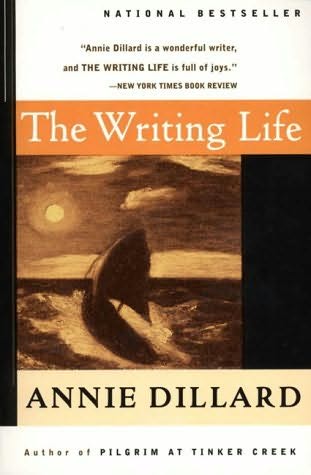Writing

Old Ken was recently told a hilarious story about the writing routine of a weekly columnist in a small town newspaper. He goes to a restaurant by himself on Tuesdays and thinks up a basic idea. Then, he works on the piece that night at home, writing up his first idea, connecting it to a second and a third idea, then making a connection to his full-time job and back to the original idea. Next, he'd give the text to his friend who would see if it all made sense. Then it would go to the copy-editors at the newspaper: a totally unreliable bunch. For example, one time he had said something in an article like the following: "I was talking to John Name at the video store who claims: 'We don't got no [sic] VHS tapes.'" But, as rendered by the copy-editors, this became: "I was talking to John Name at the video store who claims we don't got no VHS tapes (sick)."
But what about Old Ken? When I am at home during the day, this is likely where you will find me. Sitting here at the table, writing. I love this table. Old Ken and the little missus got it when some foolish lady in south east London put it out on the curb maybe in about 2006. I even went to the door and asked to make sure that she really wanted to get rid of it. When we found it, it was all covered with cooking grease and food crumbs. Going out on a limb, I'm going to guess it had been in a kitchen. Well, it makes for a great writing table.
Although you see the table at night, I prefer to write in the mornings and early afternoon; maybe from about 8 until 4. After that, I begin to lose the plot, literally and figuratively. On the table in the photograph above, you'll also see two orange ear plugs placed on a diagonal between the computer and lamp. These I use when said missus is on the phone.

If her business calls get too lengthy or passionate, you might then find me luxuriating on the screened-in porch. However, this works better in theory than in practice. This desk was also found on the street and it has been callously colonized by books, rough usage from which desks should be liberated. Also, although the scale may be difficult to judge from this image, this desk is tiny -- a child's desk.

What I do keep out here are some works of fiction that I find particularly inspiring like Melville's Moby Dick and Marilynn Robinson's Housekeeping. Nestled in between them, you may also note the book that brings me back to my nominal topic: writing. Annie Dillard's The Writing Life is one of two books that my uncle has given me twice. The other such book is Mark Richard's The Ice at the Bottom of the World, which too would probably find a place on this shelf. At least one of my two copies would.

I first read, or tried to read, The Writing Life about ten years ago. It felt like nauseating, navel-gazing crap the first time around. I've softened to it a bit since, although I don't think I could stand to read too much of it all at one go. But, its account of working on the craft of writing is an approach to which I feel intuitively sympathetic. And it is miles away from what you get with something like this:

This books is baffling to me. Old Ken may be outing himself here, but I really enjoy some of Nick Tosches's writing. I read "The Last Opium Den" in Vanity Fair ca. 2002-3; it kind of blew me away. However, this collection is a self-edited anthology of gonzo-journalism-style record reviews, limp poetry, and tawdry tales of devilish deeds extracted from journals that make you marvel at the fact that any writing got done at all. Many of these selections are interspersed with Tosches's own melancholic reflections that are supposed to provide some sort of insight into the context of the writing, but frequently just devolve into nauseating nostalgia. With that as my warning, Old Ken will stop before writing about writing becomes writing about writing about writing about writing.

